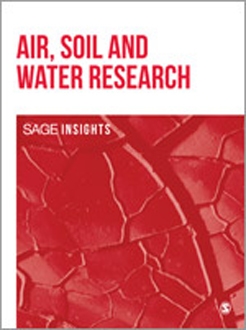Cavitation is considered a high energy demanding process for water treatment. For this study, we used a simple experimental setup to generate cavitation at a low pressure (low energy) and test it for hydroxyl radical production using a well-known chemical probe as a hydroxyl radical scavenger. The conditions for generating the cavitation process (eg, pressure, flow velocity, temperature, and other significant variables) were used to degrade model contaminants, an azo dye and an antibiotic. The amount of hydroxyl radicals generated by the system was estimated using N,N-dimethyl-p-nitrosoaniline (pNDA) as hydroxyl radical scavenger. The capability of hydrodynamic cavitation (HC) to degrade contaminants was assessed using Congo red (CR) and sulfamethoxazole (SMX) as model contaminants. Different chemical models were analyzed using UV-visible spectrophotometry (for pNDA and CR) and high-performance liquid chromatography (HPLC) (for SMX) after HC treatment under different process conditions (ie, pressure of 13.7 and 10.3 kPa, and flow rates of 0.14 to 3.6 × 10−4 m3/s). No pNDA bleaching was observed for any of the reaction conditions tested after 60 minutes of treatment, which suggests that there was no hydroxyl radical generation during the process. However, 50% degradation of CR and 25% degradation of SMX were observed under the same process conditions, comparable with previously reported results. These results suggest that the process is most likely thermally based rather than radically based, and therefore, it can degrade organic pollutants even if no hydroxyl radicals are produced. Hydrodynamic cavitation, either alone or coupled with other advanced water technologies, has been identified as a promising technology for removing organic contaminants entering the water cycle; however, more research is still needed to determine the specific mechanisms involved in the process and the optimal operation conditions for the system.
How to translate text using browser tools
1 January 2020
On the Nature of Hydrodynamic Cavitation Process and Its Application for the Removal of Water Pollutants
Erick R Bandala,
Oscar M Rodriguez-Narvaez

Air, Soil and Water Research
Vol. 12 • No. 1
January 2019
Vol. 12 • No. 1
January 2019
Congo red
hydrodynamic cavitation
sulfamethoxazole
water treatment





